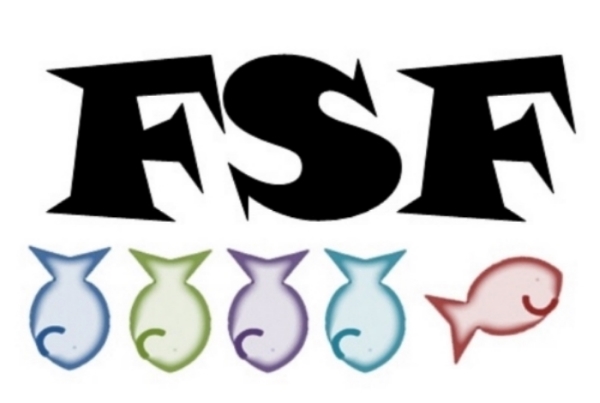And now for something completely batsh*t.
Long before I ever actually read Frankenstein, I was weirdly knowledgeable about its creator, Mary Shelley. And therefore, when I was flipping though late night television long ago and probably watching channels I wasn’t supposed to be, I discovered a young Natasha Richardson running panicked down a hallway while Julian Sands made out with Gabriel Byrne. They addressed each other as Byron, Shelly, and Mary, so naturally I kept watching. What I had stumbled upon was 1986’s Gothic directed by Ken Russell, a man who had to have been high most of the time (and if he wasn’t, the inside of his brain must’ve been a scary, brightly colored place).
This is meant to be a horror movie, but the monsters are pretty obviously the result of a bad trip.
There are several films that attempt to capture the idea of Mary Shelley winning the famous “let’s tell ghost stories” night against Byron, Shelley, and John Polidori (more about them later), but this is the only one that really focuses on the amount of opium likely ingested that night. This is NOT A CHILDREN’S FILM. Hell, I don’t this film is probably appropriate for most adults.
The madness open with Percy Shelley rowing Mary and her step-sister, Claire, to the shore of Byron’s villa. The moment he exists the boat, ye olde fangirls chase Percy up the lawn i hopes of tearing his clothes as a souvenir. You know, that whole poets being the rockstars of their day comparison. I don’t care how popular, I don’t think anyone every squeed at a poet. Sorry poets.
The characters/historical figures are established by extremes in the first 8 minutes. Byron is a lustful rogue who instantly makes Mary uncomfortable. Percy is a ridiculous child who just wants the attention of those around him. Claire is a wild thing determined to keep up in her recent and abusive affair with Byron. John Polidari, Byron’s person doctor, is just weird and uncomfortable with a sense of being both as lustful as Byron yet sexually harrassed by him (everyone man in this is established as bi from the get-go). And finally Mary, the quietest and most sensible of the group.
They decide to play a game in the giant house where the director fills the set with obvious sexual allegories, clockwork figures (that are very obviously people in costumes) and annoyed servants. The game is ended abruptly with Percy crawling out on the roof in the midst of a lightning storm and reminding Mary of her father’s favorite theories about electricity.
Drunk, high, and in hopes of an orgy, the group starts to read aloud from a book of ghost stories (while Percy makes out with Mary and feels up Claire at the same time…yep, you read that right). The stories instantly show Parallels to Mary’s future such as doom for Percy near water and the loss of a child. It feels like most movie versions about this night like to do this, Make it seem like Mary cursed them all for tragedy by writing Frankenstein. Nevermind that this whole group suffered from mental illness that was added to with booze and opium.
Byron decides they should “conjure” a ghost which Mary is unnerved by due to her own desires to bring her recently stillborn baby back to life. Even though they declare that they will make up their own ghost stories you never really see this - just more orgies, Claire having a seizure, Byron ordering a half-naked maid to pretend to be his half-sister, and Mary realizing that Percy is infatuated with Byron.
Here, I finally make a writing observation besides the poet thing. Percy Shelley is portrayed in Gothic as both being fascinated and attracted by Byron, but also as if he wants to be Byron. Sometimes writers think that by mimicking the behavior of their literary idols it will improve their craft. You know those people who only use a typerwriter and drink rum because Hemmingway did the same. Or only use a quill pen and hide oneself in a room because Emily Dickinson was a shut-in. Or pine after a girl named Laura because that’s what Petrarch did.
From that point, the movie 45 minutes of nightmare fuel involving more sex, miscarriages, boob eyes, near suicide, mud baths, philosophical conversations about death and homosexuality and religion, and Frankenstein’s creature following Mary around the house until she sees an image of her son William dead (which really did happen). The characters argue whether this is all the result of their minds or a creature of the night.
The end of all of this crazy is the idea great literature and horror comes from nights of great f*&%ed-up events. A part at the end involving modern tourists informs the audience that from Polodoiri’s obsession with blood and Byron came the novella the Vampyre and Mary’s insistence to bring back the dead came Frankenstein.
Once again, a movie about writers relies on the idea of their biography being directly linked to their works. Only in this case, it involves a lot of Julian Sands being naked and, at least for me, that does not inspire much in the way of literary genius.
By the way, despite my sounding so critical of this bizarre film, I do own it.
I’m too lazy to check who owns this. Just don’t sue me, please.



